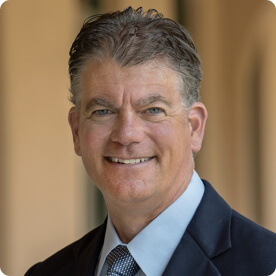Memorial Day has come and gone, and for many, “summer mode” is in full swing. We’re excited to reconnect with our advisor friends who are finally emerging from a busy tax season, followed by graduations and the flurry of late-spring activity.
Recently, I caught up with Justin Peek, CEO and Founder of PEEKWealth, to discuss the importance of incorporating charitable giving into an advisor’s practice and how donor-advised funds make a difference for clients.
In this newsletter, we are covering reminders about giving cash and stock. It’s easy to assume that one or the other is right for your client without fully exploring the client’s situation to figure out what is best for the client’s circumstances and charitable goals.
We’re also covering pointers for navigating disagreements among family members when you are setting up multi-generational charitable plans and structures. As always, we hope you will pick up the phone and call us at the first sign that not all family members are on the same page. Until then, we offer a few insights for how to approach these situations.
Finally, we’ve included a few sources for recommended reading if you’d like to go deeper into the issues that are making headlines in the world of charitable giving.
Gifts of Cash or Stock: Is It a Toss-up?
As your philanthropic clients can likely attest, the going has been rough for many of the nonprofit organizations they support. Turbulent economic conditions, concerns about inflation and challenges in the banking sector are just a few of the factors that are causing donors to be more financially conservative and perhaps begin to evaluate whether to keep their charitable giving at the levels of years past.
At the same time, many of your clients deeply understand the need to support the nonprofit sector and continue giving to the charities they love. Philanthropic support to these organizations is critical to maintaining and improving the quality of life in our region. This is especially true as the number of households giving to charity has declined by more than 16% over the last three years.
As we head into the summer months, it’s a good idea to connect with your clients about their charitable giving budgets for 2023 and, in particular, evaluate the types of assets that are best suited for each particular client to give to charity. Sometimes, it will be best for your clients to give cash. In other cases, stock will be more appropriate.
For example, as interest rates and inflation continue to increase clients’ concerns about their household finances, you and your clients may decide that preserving cash is a priority. This means that some of your clients who have typically given cash to their favorite charities or their donor-advised funds (DAF) at San Diego Foundation (SDF) may be reluctant to do so this year.
There’s a silver lining here because giving appreciated, publicly-traded stock to charitable organizations is a highly effective tax strategy in any economy. This is because capital gains tax is avoided when your client transfers long-term, marketable securities to a fund at SDF or another public charity. The client is typically eligible for an income tax deduction at the fair market value of the securities. When the charity sells the securities, the charity does not pay capital gains tax. This is a win-win for your client and the charity.
And even in a rocky stock market, not all stocks are down. Many of your clients undoubtedly hold long-term stock positions that have appreciated substantially since they bought them, even with the current stock market malaise.
For some clients whose portfolios are down significantly, this may be a year to consider contributing cash to a DAF instead of donating highly-appreciated stock (which may have been these clients’ go-to gift for so many of the last several years). Gifts of cash could reduce the burden on a client’s stock positions that may have fallen in value dramatically, giving these positions more time to recover value and, at some point in the future, be contributed to a DAF at a higher value (thereby resulting in a higher tax deduction for the client).
Overall, in turbulent times like this, donor-advised funds at SDF can come in especially handy. Now is the time to discuss charitable giving with those clients who regularly added to their DAFs throughout the market’s long bull run. If these clients intend to ride out today’s market conditions in their portfolios, an up-and-down stock market doesn’t mean their 2023 charitable giving must take a hit. These clients can use their DAFs to support their favorite organizations, sometimes even at levels consistent with prior years.
As always, don’t hesitate to contact us to discuss options for your clients’ charitable giving. We are happy to help you help your clients achieve their goals, even in a year as bumpy as 2023 appears to be!
Bridging Gaps in Multi-Generational Family Philanthropy
Differing views within families is nothing new; differing views about nearly anything and everything is centuries old. For generations, common topics of disagreement have included popular culture, politics, religion and parenting, to name a few. Frequently outranking all is money—how it’s made, spent or saved—or not.
How benevolent families share money, whether agreeably or disagreeably, is a topic all its own. It’s perhaps never been more relevant than now, given these realities: up to four generations living simultaneously; longer lifespans; more willingness to discuss family finances; differing social views; and the desire of older generations to set an excellent philanthropic example while retaining some control of assets built over many years.
And the “share” discussion will likely continue for decades.
According to figures cited in a May 2023 New York Times article (subscription required), total U.S. family wealth of $38 trillion in 1989 more than tripled to $140 trillion in 2022, with Baby Boomers and Generation X holding 90% of that. By 2045, older Americans will pass a projected $84 trillion to Millennial and Gen X heirs, with $16 trillion transferring by 2033. With evermore wealth circulating, ideas and conflicts about its use will likely result.
As an advisor, it is your responsibility to help your clients achieve their goals for their estate plans, financial plans and charitable objectives. As you work with your multi-generational philanthropic clients, you have undoubtedly noticed that even a subject as uplifting as philanthropy can lead to lively discussions and sometimes even disagreements. To fulfill your role, you must lean on strategies to navigate conversations about charitable priorities when not everyone is on the same page.
You can also lean on SDF–and we encourage you to do so.
Community foundations occupy a unique position amid this unprecedented wealth transfer: that of arbiter, guide and even peacemaker among benevolent multi-generation families. In addition to understanding the needs of the San Diego region, the nonprofits and programs that are addressing those needs, and the ins and outs of the tax vehicles best suited for your clients to help meet those needs, our team is also deeply experienced in facilitating productive dialogue among people who bring valuable, diverse viewpoints to the table.
As a secure, convenient, and trusted partner to help a family invest wealth in charitable causes, SDF can help you work with your philanthropic clients in a variety of ways:
- Our team focuses on listening to understand the cross-generational and intra-generational values of a family.
- We ask many questions about what causes matter to your clients and the origins of those preferences, historically and now.
- Our team seeks to understand a family’s values, and then we research and suggest potential grantee organizations or causes if the family is seeking input. We can also deeply research organizations that the family is already supporting.
- We offer to educate the various generations about tactical opportunities, including donor-advised funds, field-of-interest funds, unrestricted funds, designated funds and anonymous giving, among others.
- Our team is happy to develop options for multi-cause allocations that peacefully meet the needs of all involved.
- For geographically dispersed generations, our team offers to meet at agreeable intervals, even digitally, to understand a family’s current and changing views.
We are here for you and the philanthropic families you serve. As the needs, capabilities and opinions around wealth expand, SDF can facilitate conversations, connection and contributions among well-intended but independently-minded families and help you carry out your professional responsibilities.
Summer Topics Worth Watching
Proposed legislation known as the Charitable Act appears to be gaining momentum. The bill calls for making available a “below the line” deduction to taxpayers who do not itemize on their tax returns. This proposed deduction is slated to reach up to one-third of the standard deduction (around $4,500 for an individual filer and around $9,000 for married joint filers). In addition to providing an overall boost to charitable giving, the intent is that enabling all taxpayers to benefit from the charitable deduction might help reverse the decline in recent years in the number of households giving to charity each year.
Qualified Charitable Distributions (QCDs) are having a moment, thanks to new laws passed late last year that expand this unique charitable giving opportunity for those 70 ½ or older. Watch out, though, for potential pitfalls. As a recent legal analysis points out, the devil is in the details, especially about the new “Legacy IRA” provisions allowing eligible taxpayers to make a one-time QCD to a charitable remainder trust or charitable gift annuity.
A recent private letter ruling reinforced once again that the IRS takes the concept of “private inurement” very seriously for nonprofits. As in, if you do it, you’re out. Most nonprofits are well aware that they will be putting their 501(c)(3) exemption status at risk if they play fast and loose with the rules to prevent undue benefit to a private person. After all, charities are established for the public good, and public good and private profit do not mix. Take note of this if you are an advisor who counsels nonprofit organizations.
Learn More
For nearly 50 years, we have partnered with a large network of wealth advisors, estate planning attorneys, tax planners and other advisors to help high-net-worth clients and families achieve financial planning objectives and charitable giving goals while maximizing tax deductions.
If you’re interested in learning how we can help meet your clients’ financial planning and charitable giving goals in 2023, contact me at (858) 245-1508 or jrogers@sdfoundation.org.





